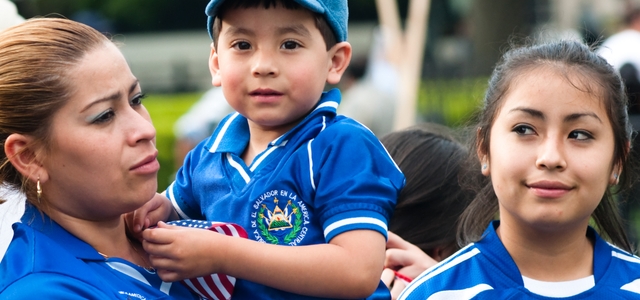 Within the current immigration system, many women confront systematic barriers when trying to gain legal status. This is one of the main conclusions drawn from a study conducted by social scientists Cecilia Menjivar and Olivia Salcido. Based on a 10-year-long research project on immigrant women in Arizona, the authors identify specific instances in which gender inequality is ingrained in the formulation, interpretation, and implementation of immigration laws.
Within the current immigration system, many women confront systematic barriers when trying to gain legal status. This is one of the main conclusions drawn from a study conducted by social scientists Cecilia Menjivar and Olivia Salcido. Based on a 10-year-long research project on immigrant women in Arizona, the authors identify specific instances in which gender inequality is ingrained in the formulation, interpretation, and implementation of immigration laws.
According to the study, immigration law presumes and reinforces women’s status of dependency, hindering women’s legal incorporation in the host society. For example, for women, employment-based visas are very difficult to obtain. This is true even for many women who “support their families as heads of households by literally working day and night.” In part, this relates to the types of occupations that the law encodes as high-demand jobs. These occupations tend to be elusive for women, and the types of work typically performed by immigrant women are not adequately recognized in the current system. As a result, women who apply for permanent residence tend to rely on male relatives to petition for them in the legalization process. Because of additional structural barriers—such as access to education and skill acquisition in their countries of origin—women have fewer opportunities than men to apply as principal visa holders.
Other problems identified by the study relate to the specific obstacles that women encounter when they seek protection through the Violence Against Women Act or petition for asylum. These hurdles range from burdensome and difficult-to-obtain paperwork (e.g. proof of abuse) to more structural issues concerning how “well-founded fear” of persecution is defined. In particular, the authors underscore that the standard interpretation of immigration and refugee law is based on male experiences and, therefore, does not adequately recognize the risks that women are exposed to in their home countries.
Moreover, the obstacles for women’s legal integration do not end with the petitioning phase. Even after a woman successfully begins the legalization process, it is sometimes difficult for her to secure employment outside the home because work authorizations often take a long time to be issued.
Reforms in immigration law that are currently being debated offer an opportune moment to address these issues. In particular, the recently introduced “Border Security, Economic Opportunity, and Immigration Modernization Act’’ has raised concerns regarding the potential gender bias in some provisions. For example, evidentiary requirements for different steps in the legalization process (e.g., continuous employment or proof of work requirements) may put women who work at home at a disadvantage. Similarly, the merit-based point system may not offer realistic avenues for immigration for caregivers or women from countries with few opportunities for human-capital acquisition. As the bill continues to be debated, these issues cannot be overlooked if achieving greater gender equality is a goal.
Photo Courtesy of Ryan Rodrick Beiler / Shutterstock.com
FILED UNDER: Children, immigrant women, immigration legislation, S.744


